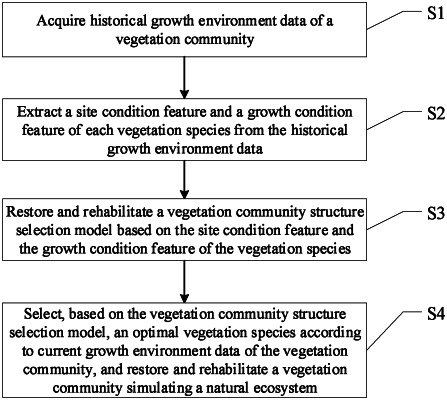| CPC G06F 30/27 (2020.01) | 19 Claims |

|
1. A method for a vegetation restoration or rehabilitation, the method being based on machine learning (ML) and comprising:
acquiring historical growth environment data of a vegetation community;
extracting a site condition feature and a growth condition feature of each vegetation species from the historical growth environment data;
restoring and rehabilitating a vegetation community structure selection model based on the site condition feature and the growth condition feature of the vegetation species, specifically comprising the following sub-steps:
acquiring growth condition features of a meteorological environment where the vegetation species is located and selecting a most correlated growth condition feature of the vegetation species;
acquiring site condition features of a geographical environment where the vegetation species is located and selecting a most correlated site condition feature of the vegetation species;
establishing, based on the selected most correlated growth condition feature and site condition feature of the vegetation species, a sample database of a one-to-one correspondence; and
training, based on the sample database, the vegetation community structure selection model by an ML method, and determining a correspondence between the growth condition feature and the vegetation species and a correspondence between the site condition feature and the vegetation species; and
selecting, based on the vegetation community structure selection model, an optimal vegetation species according to current growth environment data of the vegetation community, and restoring and rehabilitating the vegetation community to simulate a natural ecosystem.
|